Higher classification Anoles | Phylum Chordata Family Dactyloidae Scientific name Anolis sagrei Rank Species | |
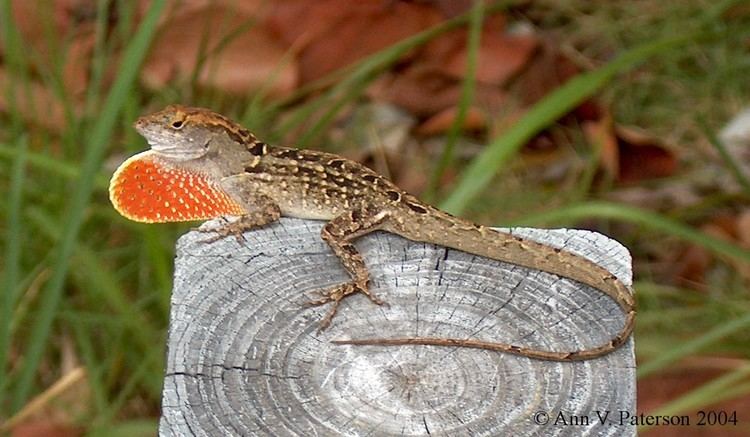 | ||
Similar Anoles, Carolina anole, Reptile, Knight Anole, Curly‑tailed lizards | ||
6 cool facts about green brown anoles pet reptiles
The brown anole (Anolis sagrei), also known as the Bahaman anole or De la Sagra's Anole, is a lizard native to Cuba and the Bahamas. It has been widely introduced elsewhere, by being sold as a pet lizard, and is now found in Florida and as far north in the United States as southern Georgia, Texas, Louisiana, Mississippi, Alabama, Hawaii, and Southern California. It has also been introduced to other Caribbean islands and Taiwan in Asia.
Contents
- 6 cool facts about green brown anoles pet reptiles
- Big brown anole lizard
- Description
- Shedding
- Diet
- Predation
- Communication
- References
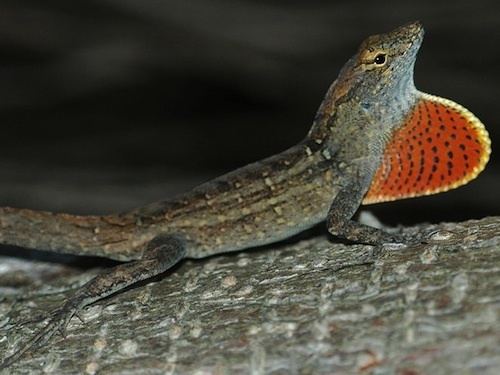
This species is highly invasive. In its introduced range, it reaches exceptionally high population densities, is capable of expanding its range very quickly, and both outcompetes and consumes many species of native lizards. The brown anole's introduction into the United States in the early 1970s has altered the behavior and triggered a negative effect on populations of the native Carolina anole (Anolis carolinensis, also known as the green anole), which have generally been relegated to the treetops.
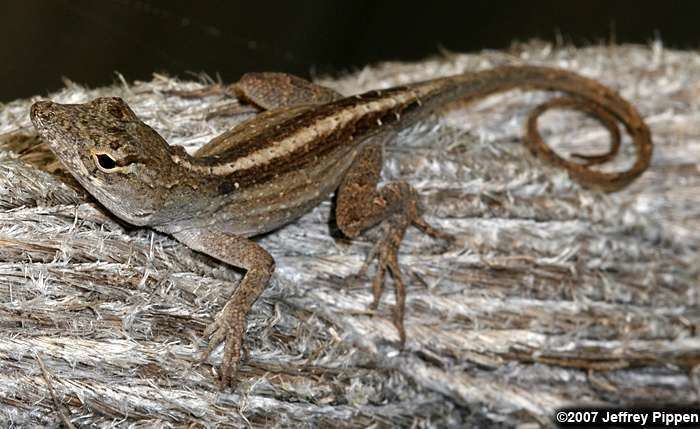
Big brown anole lizard
Description
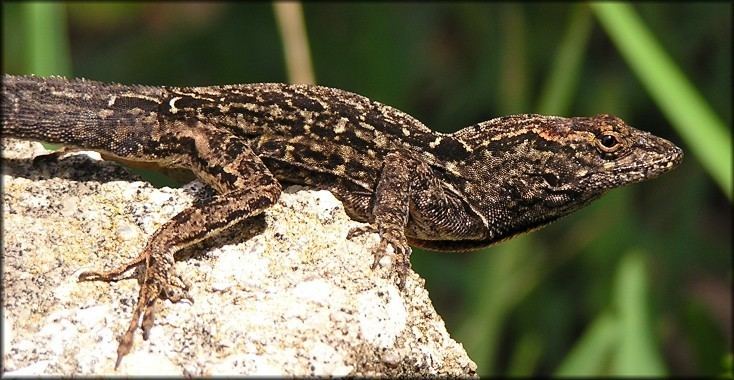
The brown anole is normally a light brown color with darker brown to black markings on its back, and several tan to light color lines on its sides. Like other anoles, it can change color, in this case a darker brown to black. Its dewlap ranges from yellow to orange-red. The males can grow as large as their green anole male counterparts, around 17.8–20.3 cm (7.0–8.0 in) long, with some individuals topping 22.9 cm (9.0 in). The females are also around the size of female green anoles: 7.6–15 cm (3.0–5.9 in). The male brown anole's head is smaller than that of the male green anole. Also, the brown anole's tail has a ridge that travels all the way up to behind the head, a feature the green anole lacks.
Shedding
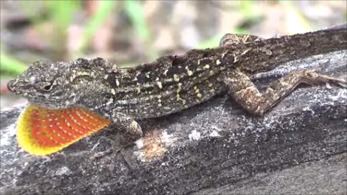
Brown anoles molt in small pieces, unlike some other reptiles, which molt in one large piece. Anoles may consume the molted skin to replenish supplies of calcium. In captivity, the molted skin may stick to the anole if humidity is too low. The unshed layer of skin can build up around the eyes, preventing the lizard from feeding and may lead to starvation. This can be prevented by maintaining high humidity.
Diet
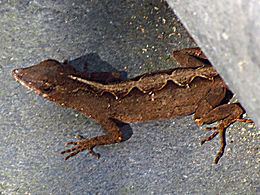
Brown anoles feed on small arthropods such as crickets, moths, ants, grasshoppers, cockroaches, mealworms, spiders, and waxworms.They may also eat other lizards, such as the green anole, lizard eggs, and their own molted skin and detached tails. If near water, they eat aquatic arthropods or small fish – nearly anything that will fit in their mouths.
Predation
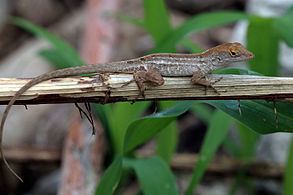
As a defense mechanism, the brown anole can detach most of its tail when pursued or captured. The piece that breaks off will continue to move, possibly distracting the predator and allowing the anole to escape. The lost tail will partially regrow. If provoked, the brown anole will bite, urinate, and defecate. Predators include rats, snakes, birds and many larger predators.
Recent work in experimentally introduced populations in the Bahamas has shown that body size in the brown anole may not be affected by predation, as was previously thought.
Communication
Anoles use visual cues as their primary signaling mode. However, recent evidence suggests that male brown anoles are also capable of sensing chemical cues that are left behind by female conspecifics.
